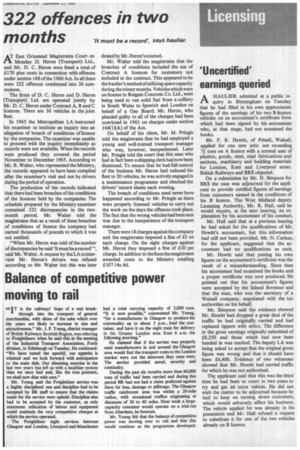Balance of competitive power moving to rail
Page 77

If you've noticed an error in this article please click here to report it so we can fix it.
4417 is the railways' hope of a real break ' through into the transport of general merchandise, with slices of the cake which over the years are likely to increase in size and attractiveness." Mr. J. P. Young, district manager of British Railways Scottish Region, was referring to Freightliners when he said this at the meeting of the Industrial Transport Association, Forth division, in Edinburgh on Tuesday. He continued: "We have tasted the aperitif, our appetite is whetted and we look forward with anticipation to the main dish. Our slimming exercise in the Last two years has left us with a healthier system than we once had and, like the true gourmet, we shall now dine with care."
Mr. Young said the Freightliner service was a highly disciplined one and discipline had to be accepted by BR staff to ensure that the claims made for the service were upheld. Discipline also had to be accepted by the customer, as only maximum utilization of labour and equipment could maintain the very competitive charges at which the service operated.
The Freightliner night services between Glasgow and London, Liverpool and Manchester had a total carrying capacity of 2,000 tons. "It is now possible," commented Mr. Young, "for a manufacturer in Glasgow to produce his commodity up to about 5 p.m., load the container, and have it on the night train for delivery in the Greater London area from 6 a.m. the following morning."
He claimed that if the service was properly used manufacturers in and around the Glasgow area would find the transport costs to the London market were not the deterrent they once were. The service provided speed, security and continuity.
During the past six months more than 60,000 tons of traffic had been carried and during this period BR had not had a claim preferred against them for loss, damage or pilferage. The Glasgow traffic catchment area was within a 20-mile radius, with occasional traffics originating at distances of 30 to 40 miles. Next week a largecapacity container would operate on a trial run from Aberdeen, he forecast.
Mr. Young felt that the balance of competitive power was moving over to rail and that this would continue as the programme developed.








































































































































































































































































































































































